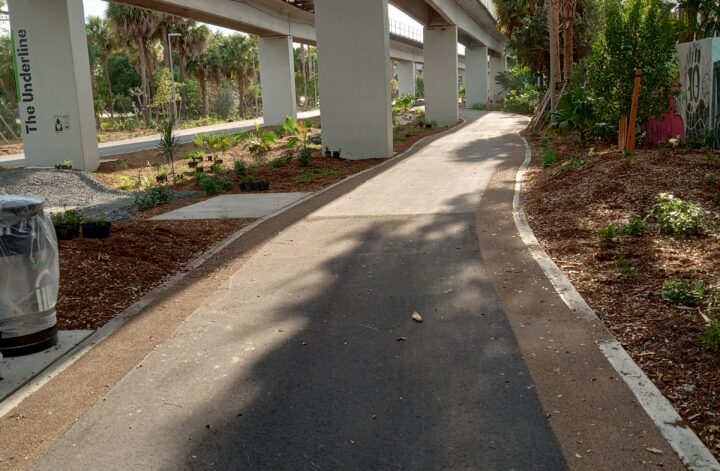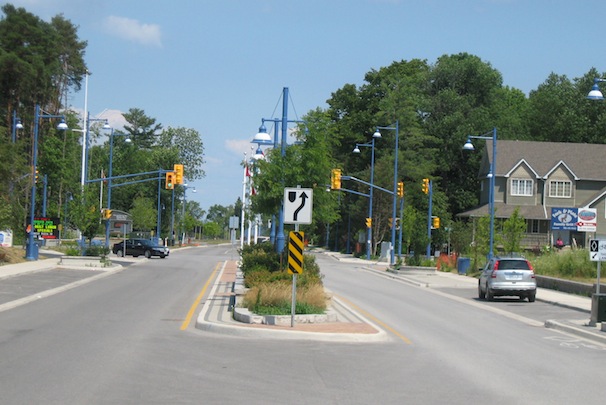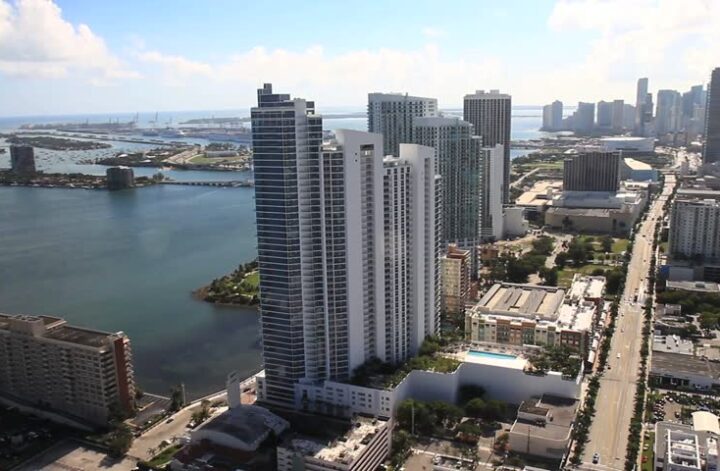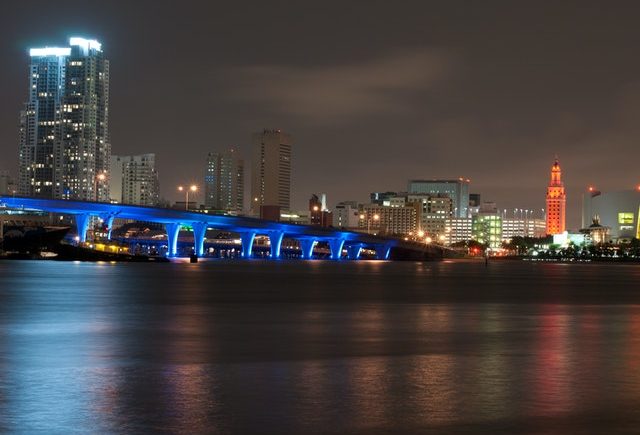Phase 2 of Miami’s Underline is almost complete. Since it goes through my neighborhood, I’ve been watching construction for the past year and anticipating its opening. New parks, dual bike and pedestrian lanes, bioswales and new lighting over the 2 mile trail extension will create great neighborhood amenities and build off of the momentum of Phase 1 in Brickell. This area of Miami has some of Florida’s densest neighborhoods, and nearby Metrorail stations will connect transit riders to the trail, making more of Miami accessible to pedestrians and cyclists.
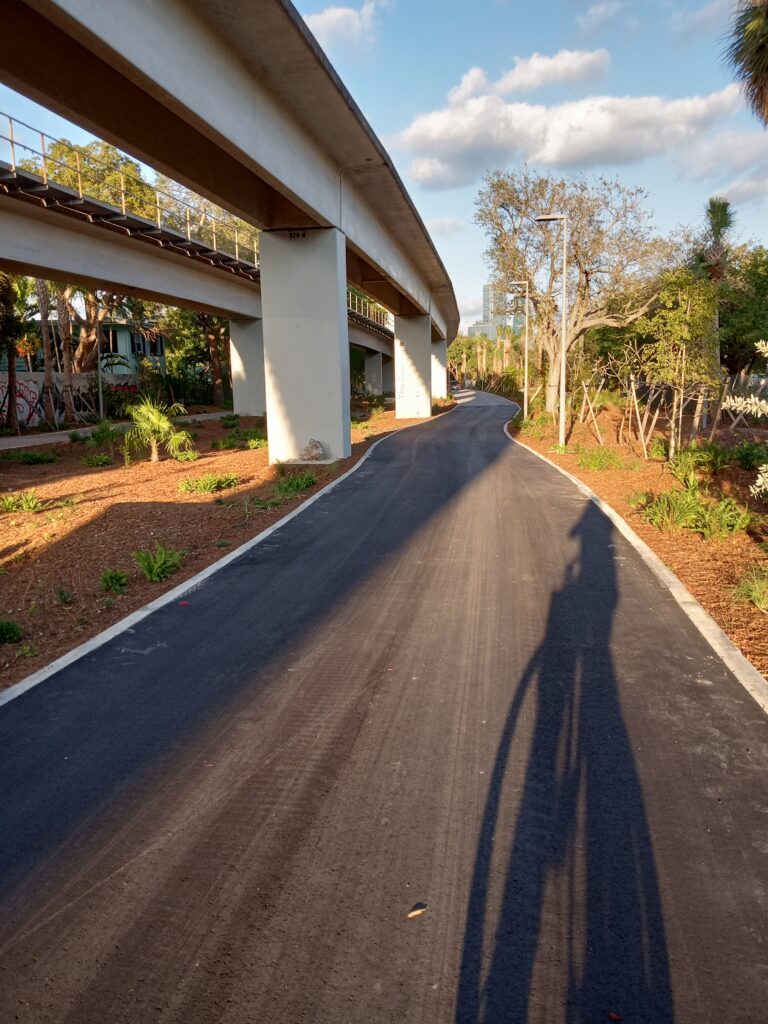
I’ve been walking and cycling along Phase 2 extensively, and now that it’s largely complete, I’ve noticed some safety issues that I hope are resolved with future projects. These issues involve the intersections that pass through the Underline. Some of them are more a matter of convenience, but most involve a danger to the growing number of people who use the trail. Here’s my list:
- SW 13th St: The mid-block pedestrian signal should be on recall (automatic), and not actuated (activated by push button). There are enough pedestrians that cross here to necessitate a “Walk” during each red phase of the adjacent signal. The actuated pedestrian signal causes significant delay for trail users and encourages people to cross against the light rather than wait for the signal. Timing the pedestrian signal to the one at the SW 1st Ave. intersection would make a world of difference.
- SW 25th Rd: A difficult signalized intersection for pedestrians and cyclists. It’s next to a I-95 off ramp which allows right turn on reds that cross the trail. There’s a pedestrian activated flashing beacon here and new crosswalks, but 5 lanes of traffic adjacent to a highway and a trail crossing aren’t a good combination. My concern is traffic turning right from SB I-95, since drivers may not have time to react to pedestrians if they take the corner fast and speed through the SW 1st @ SW25th intersection. It looks like there’s enough right-of-way to create a 6′ wide median refuge island here, however, which would slow traffic a bit and make the trail crossing more visible. Long term, a pedestrian hybrid beacon or full signal would be ideal if it were timed with adjacent signals.

- SW 26th Rd: This is another tough signalized intersection. There are new crosswalks, bike crossing markings and a refuge island here, but traffic getting off of I-95 and turning right across the trail poses a significant risk to pedestrians. There’s also a pedestrian activated flashing beacon, but that may not be enough to stop drivers in time given the geometry of the WB turn lane coming off of I-95. Short term, I would replace the flashing beacon with a pedestrian hybrid beacon or full signal. Long term, I would redesign the right turn channel off of I-95 to create an urban T-intersection to replace the “swoopyness” of the road. A tighter turn radius would slow traffic down and give drivers more time to react to trail users. Surface roads shouldn’t be designed like highway ramps.

- SW 16th St: There’s a new crosswalk here along with removal of a channelized right turn, which helps. But this is still a wide intersection (about 80′ across) that creates a lot of pedestrian/vehicle conflicts. There’s enough right-of-way to shift the lanes on SW 16 St. slightly to create a 6′ wide pedestrian refuge island. I’m told that raised crosswalks were not permitted along the Underline, however, which is unfortunate because it’s the ideal solution to slow traffic and increase driver awareness. Given this limitation, a leading pedestrian interval (LPI) would also be a great safety countermeasure to protect trail users from turning vehicles during their “Walk” phase.

- SW 17th St.: Same situation as SW 16th St. A median refuge island may not fit here, however, but an LPI should be installed to protect trail users.
- SW 19th St.: The last intersection of the Phase 2 segment. Since it’s unsignalized, it seems like a raised crosswalk would be ideal (if allowed in the future).
A lot of progress has been made with the Underline, but my concern is that these intersections will lead to an increasing number of vehicle crashes with trail users if additional safety countermeasures aren’t installed. The Underline should be a safe, contiguous path even across intersecting roadways. This means expecting drivers to drive slower and stop more often across the trail to accommodate its increasing number of users.

